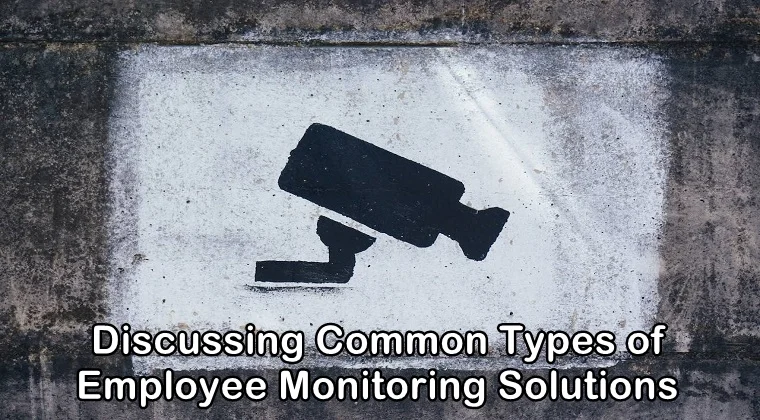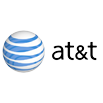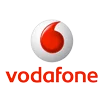Discussing Common Types of Employee Monitoring Solutions

More companies are incorporating employee monitoring solutions in their business environment because they have understood how vital monitoring is for the company’s overall productivity. With employee monitoring tools deployed in the workplace, employers and managers can keep a close eye on employees during working hours.
In fact, several studies have suggested that employee monitoring helps keep the staff workers focused on their tasks and improves overall productivity. It also increases employee engagement and decreases the chances of data theft in the company.
It is true that employee monitoring isn’t easy to integrate into a company. Employers need to follow a plethora of rules and regulations while deploying monitoring solutions in the workplace. However, once they realize the several benefits that they can gain from monitoring employees, they won’t step back. In this post, we will discuss common types of employee monitoring tools.
Employee monitoring tools will prevent employees from wasting time during working hours. They can stay focused on their tasks and avoid wasting time on other activities. Employers can also have complete transparency regarding their employees. They will have a record of everything done by the employees during office hours.
Employers can have a better insight into employee performance. The monitoring tools will help them evaluate their performance and based on that evaluation, they can decide whether or not they are worthy of any rewards or increments. With better employee monitoring solutions, employers wouldn’t have to micromanage and constantly supervise their employees by hovering around them all the time.
Common Types of Employee Monitoring Solutions at Work
Now, let us take a look at the common types of employee monitoring solutions that employers can consider deploying in the workplace.
Email and Network Monitoring
Let us start with the most common type of employee monitoring solution i.e. email and network monitoring. Email and network monitoring offer a direct approach to monitoring employees in the workplace.
Employees already know that work email IDs can only be used for official purposes. They cannot use them for personal reasons because they know all their work emails will be monitored by the IT team. Employers can use email monitoring solutions to check whether or not employees are using their email IDs for work-related purposes only.
On the other hand, employers can also carry out network monitoring to monitor all the incoming and outgoing traffic from the office network. Using network monitoring, employers can detect malicious programs installed on the employee’s device and also learn about the unusual internet and social media usage in the company.
Video Monitoring (CCTV Cameras)
Another best way to monitor employees in the workplace is through video monitoring tools such as CCTV cameras. Video surveillance is widespread in almost every business, whether big or small. Employers use CCTV cameras for safety reasons and to detect any unusual behavior.
While installing CCTV cameras in different rooms in the office premises, you need to remember that the cameras will only show whether employees are present at their workstations. You cannot know whether or not they are being productive.
With cameras installed in several rooms, you can identify if there is any visible misconduct or potential security problems taking place in the workplace. Also, keep in mind that you should avoid putting up the cameras in work areas such as washrooms and common rooms for women.
Keycards
Many companies, especially those concerned with having high-security levels in the workplace, make use of keycards. Each keycard is handed to employees but before giving them away, the employer can set individual security settings for each employee.
Keycards are used to prevent employees from visiting unauthorized locations within the workplace. For instance, every location inside the office will have its own keycard sensor that will only permit those employees to enter who possess the authorized keycards.
Most companies also use keycards to keep a check on employee attendance as well as monitor the physical location of employees within the workplace.
Again, keycards won’t tell employers whether employees are working or wasting time at their workstations.
Vehicle Monitoring (GPS Tracking)
The sales team often has to go out in the field for their work. Surely then employers won’t be able to monitor them using video surveillance or keycards. Employees who regularly go out in the fields for work or to attend business meetings at different locations can be monitored with the help of vehicle or GPS tracking tools.
GPS trackers can be installed on the company-owned vehicles employees are using. The GPS technology installed in these trackers helps employers track their employees’ whereabouts in real-time. In case, your employees are not using any vehicles to move to another location for work, then you can use cell phone monitoring apps that also provide GPS tracking feature. All you need to do is install that monitoring app on your employee’s cell phone device and track their location.
Employee Monitoring Software
Employee monitoring software or app is one of the best employee monitoring tools that a company can use to keep a check on its employees’ activities during working hours. No matter your employees are working in the office or at their homes, monitoring apps come across as the least invasive way to monitor employees.
With employee monitoring software like Mobistealth, you can track employee emails, internet activity, social media activity, and their whereabouts once they go out for work. You can also check how much time they have spent on a particular task and whether they are focused on their work.
While monitoring employees at work, employers should not forget employee monitoring ethics. Employees should only be monitored when they are at work. It is unethical to monitor their activity after office hours. Also, always inform your employees before deploying the monitoring solution on their system, so that they do not think you are trying to invade their privacy.








